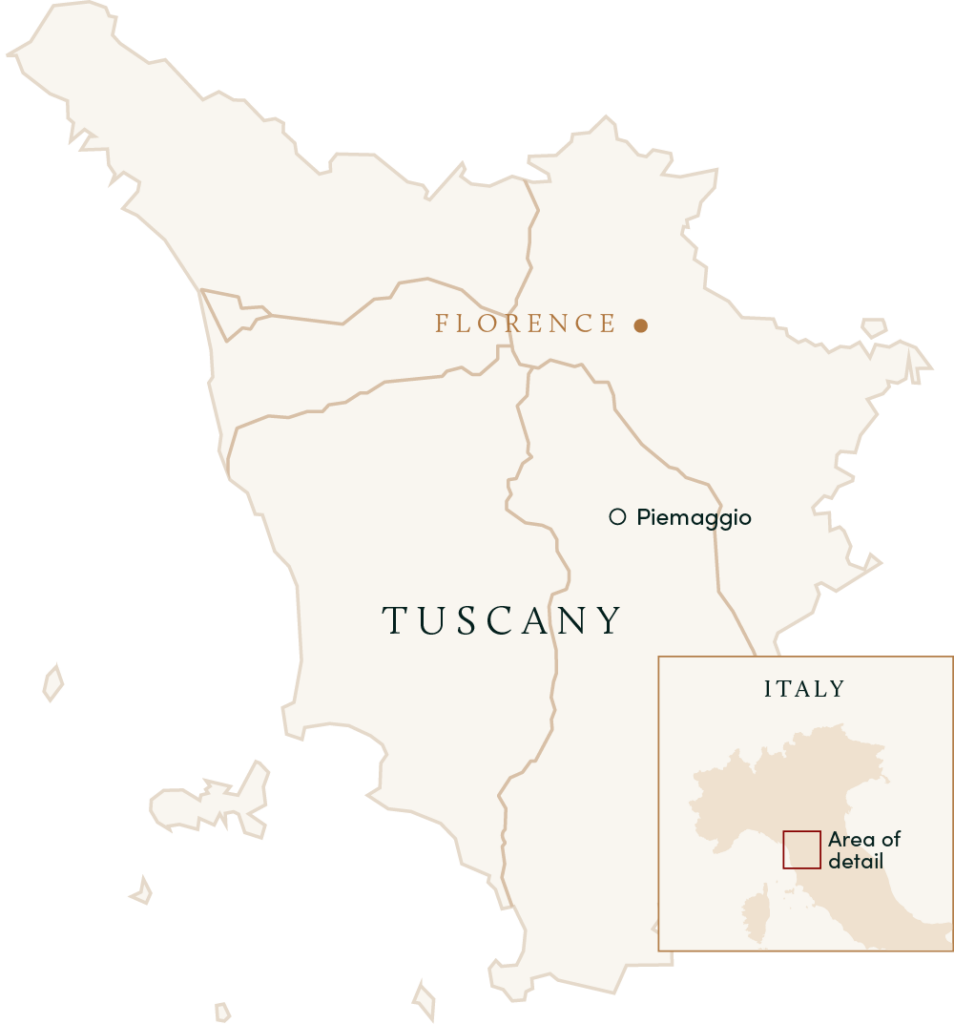Until very recently, we found ourselves in a curious position: despite working with two of the most beloved producers in the Chianti Classico zone—Montevertine in Radda-in-Chianti and Le Boncie in Castelnuovo Berardenga—we had no “Chianti Classico” to offer our clients, as both of these maverick growers choose to operate outside the classification system. Montevertine’s reasons are historically rooted, while Le Boncie’s are more philosophical, but their independence points to a larger undercurrent of conservatism within Tuscany which often fails to properly apprize some of its most dynamic winegrowers. Chianti in particular—much like Sancerre and Champagne—can suffer, ironically, from its status as a “brand” within the world of wine. If a category sells as well as these do by name alone, producers are disincentivized from pushing beyond “good enough” and pursuing true greatness or distinctness. However, Chianti Classico remains one of Italy’s most profound terroirs in spite of its often lackluster output, and an artfully rendered example can stop you in your tracks…
The Piemaggio estate lies in the northwest sector of Castellina-in-Chianti, in the heart of the historical Chianti Classico zone, and traces its roots back to the 11th century; a pieve (church) from the era located at the property’s highest hilltop (maggiore) gives the estate its name. Vines cover 12 hectares worth of Piemaggio’s hillsides, all in the hamlet of La Fioraie, with Sangiovese, Canaiolo, Ciliegiolo, and Colorino planted in the classic alberese (sandstone) and galestro (limestone marl) soils of the zone, at altitudes between 380 and 480 meters above sea level. Steady breezes and thick surrounding forests help mitigate drought and help ensure a properly long growing season.



We were clued into Piemaggio by a friend of ours who works closely with Montevertine and who deeply understands our aesthetic and approach, and from first sip these felt like a snug warm coat. Here was the magic of Sangiovese on full display, that tango of unapologetic acidity and savory fruit, shot through with a vein of bold earthiness and given form by a stony, cleansing minerality. If Piemaggio’s wines lack the aristocratic perfection of Montevertine’s, or the full-throttle wildness of Le Boncie’s, they more than compensate with delightful balance and a sheer lack of pretension. These truly could come from nowhere else, and they put the taster in direct communion with the inimitable soils of Chianti Classico.
Vineyard work here is organic unless an entire crop is on the line, and nothing that happens in the cellar is flashy or trendy; fermentations take place in cement, and aging takes place in a combination of concrete and used wooden vats of various sizes (between 500 liters and 25 hectoliters). The wines rest further in bottle, and are put up for sale ready to delight. Furthermore, in tribute to the hamlet’s origin legend, the labels all bear prominently the name La Fioraie (“the flower sellers”). According to lore, a medieval pilgrim friar passing through the area fainted of exhaustion under the intense Tuscan sun, and was revived to health by a group of three flower vendors who saw him crumple. The friar, carrying the fond memory with him during his subsequent travels, later returned to the area, built a church, and planted vines.
Farming
Practicing Organic
Treatments
Copper-sulfate only
Ploughing
Annual ploughing to promote vineyard health, with grass tolerated between the vines
Soils
Albarese (Limestone-clay) and Galestro (Sandstone
Vines
Trained in Guyot and planted at 4,800 vines/ha
Yields
Controlled through pruning, debudding, and green harvesting
Harvest
Entirely manual, usually in early October
Sourcing
Entirely estate fruit
Fermentation
Following total destemming, wines ferment spontaneously in 100-hl stainless-steel tanks; cuvaison lasts c. 25 days
Extraction
Wines see pumpovers and racks-and-returns during maceration
Chaptalization
None
Pressing
Pneumatic pressing
Malolactic Fermentation
Spontaneous, in tank following alcoholic fermentation
Élevage
Wines age 18-36 months in 110-hl fiberglass and concrete vats, 25hl French oak botti, and 5-hl neutral Frenchoak tonneaux
lees
Wines are racked following malolactic and remain on their fine lees until assemblage prior to bottling
Fining and Filtration
Wines are unfined and unfiltered
sulfur
Applied when necessary

Optional caption text here lorem ipsum



